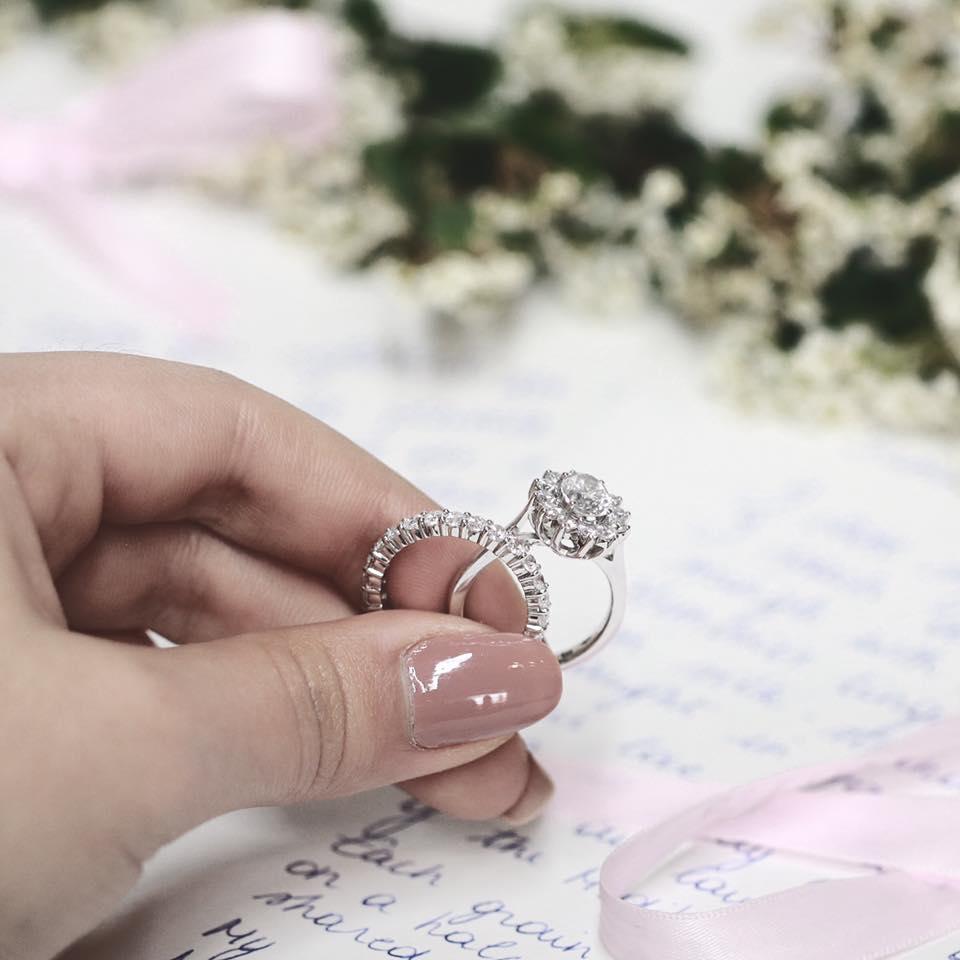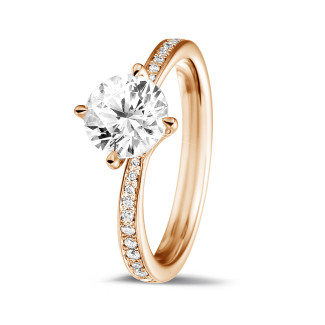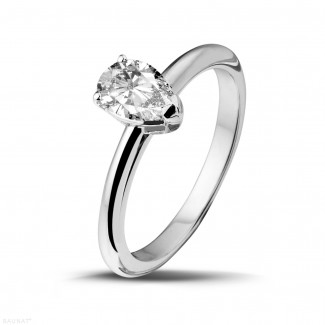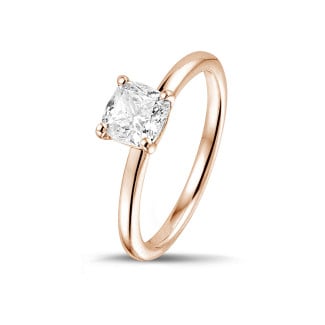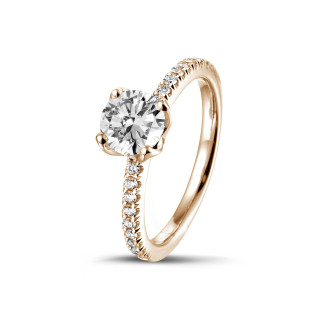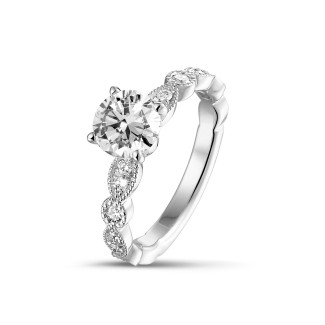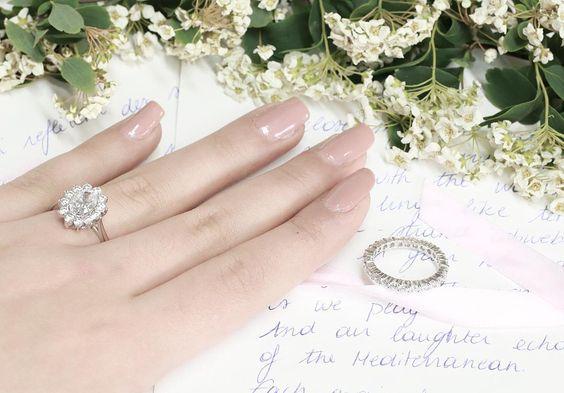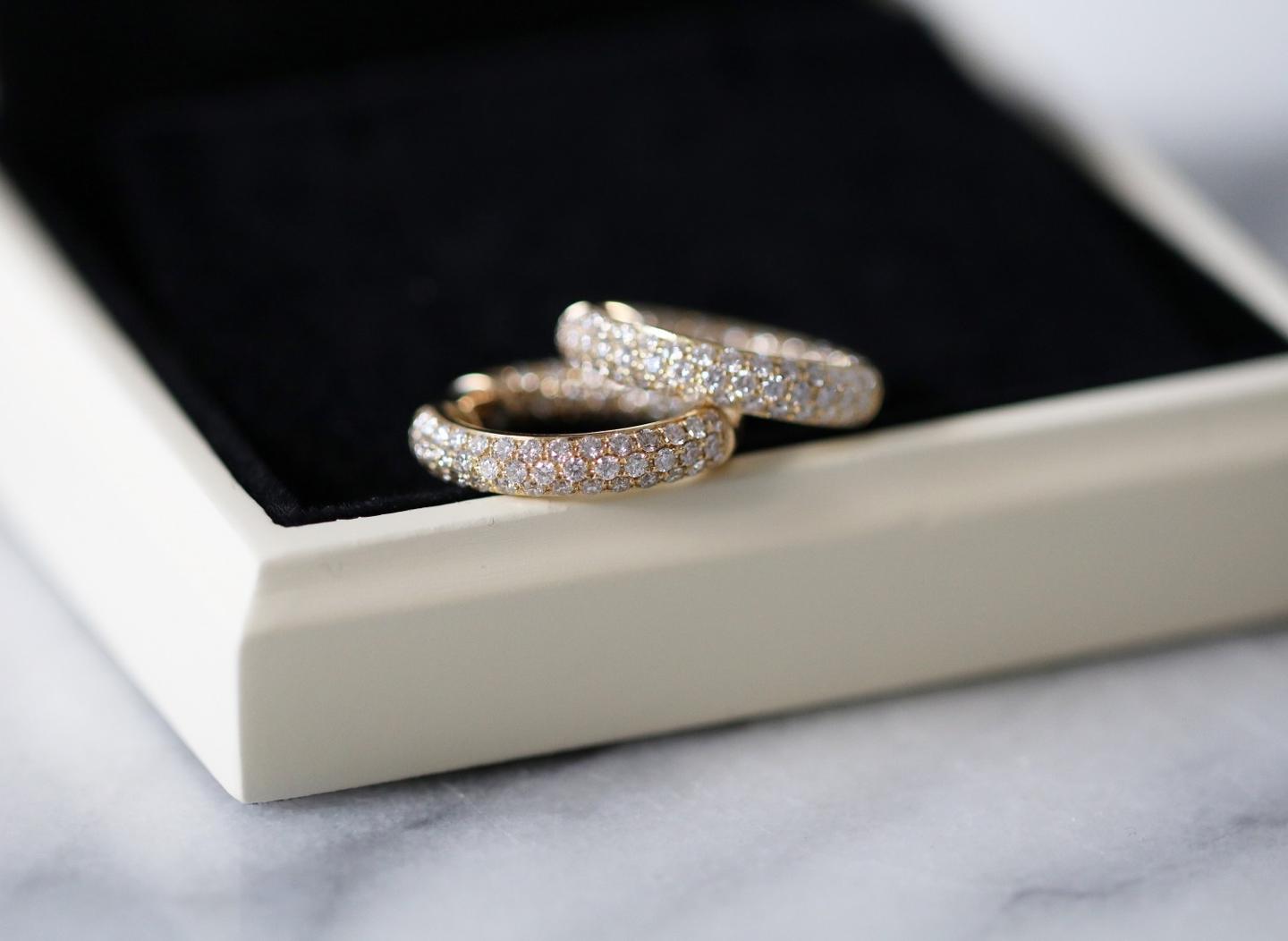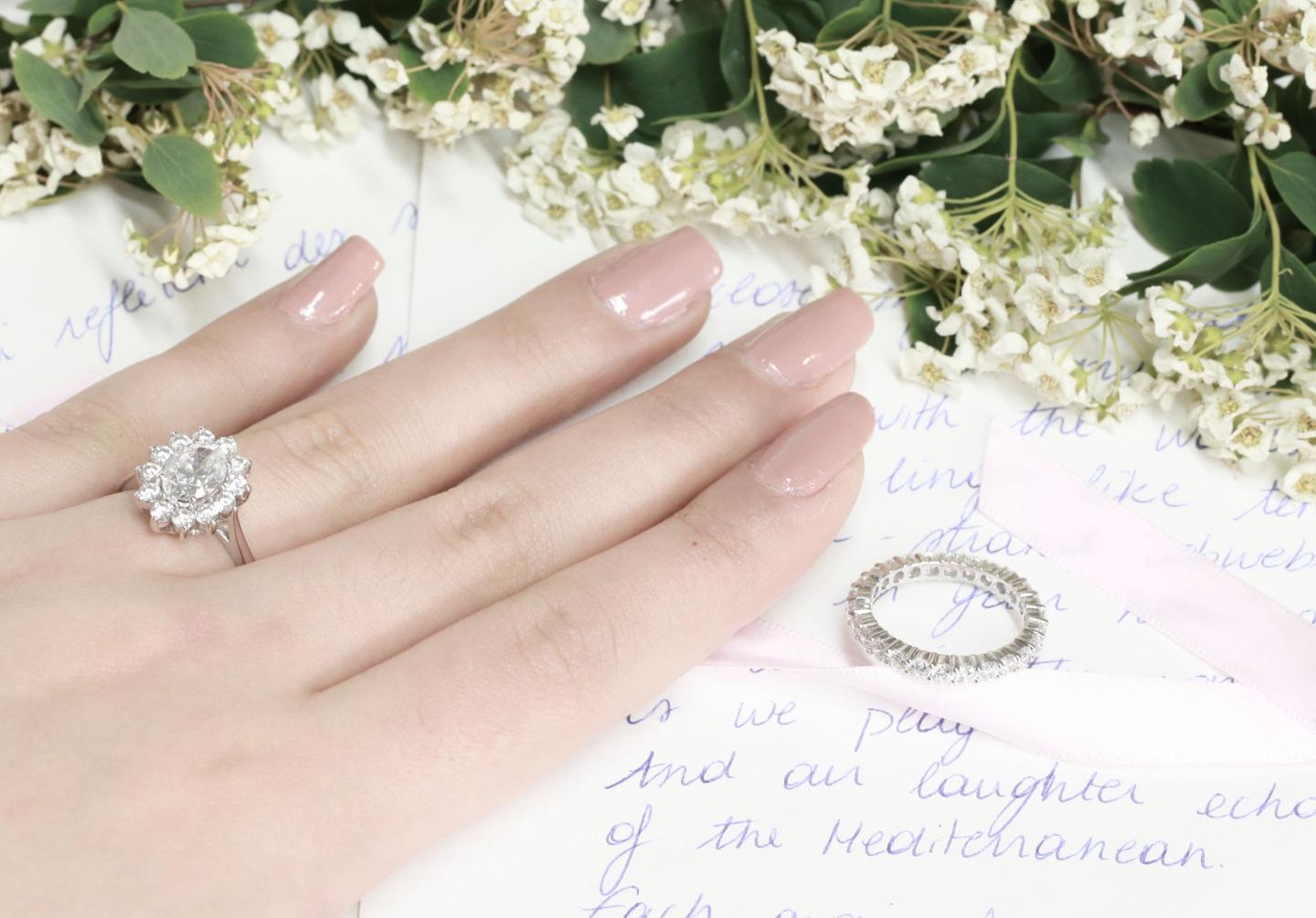Inspirational insights
Blogs in the spotlight
- How do I buy the perfect diamond ring?
- Choosing the perfect wedding ring
- Buying an engagement ring: expert tips & tricks
- Which earrings are the right ones for you?
- How to choose the perfect diamond bracelet?
- How to choose a necklace for ladies?
- Take your time in choosing your watch
- What's the right jewellery for each occasion?
- Why buy diamond jewellery online?
- A guide to building up your jewellery collection
- What types of precious metals are there?
- What types of precious metals are there?
- Jewellery trends and innovations in 2020
- What sorts of diamond setting are there?
Buying a one of a kind engagement ring for your loved one can be a scary task. There are so many things to take into consideration, from the stone and the 4C’s, to the style and the budget you can or are willing to spend. So, here's a quick guide to choosing one of the most important aspects, the carat size of the diamond.
Most viewed diamond jewels
.
How many carats is right for your engagement ring?
It seems to be the perfect size for a diamond solitaire engagement ring as it is not too big, not too small and suits all hand sizes. You may think 1.00ct diamonds are highly-priced, but the value can vary quite a bit. For instance, the shape influences the price considerably, a round diamond will always be more expensive than a cushion or a princess cut with all other factors being equal. This is mainly because round diamonds have the highest sparkle and are the most popular.
Then you need to take into account the other 3C’s that were established by the GIA: cut, clarity and colour (carat being the fourth C). A perfect D colour and IF clarity diamond will be considerably more expensive than a G colour and VS2 clarity 1.00 carat stone, but if the cut is very good, a G VS2 will look very beautiful too. A large diamond would be one over 2.00 carats. Therefore, depending on your budget, you can purchase the same size diamond and just choose different characteristics that would fit your budget better.

Alternatives: Halo, & Trilogy
The halo is perfect should you wish to still have the one centre stone style. Extra sparkle is added through a circle of smaller diamonds surrounding the centre stone, so even if the centre stone weighs just 0.50ct, the whole design will be just as stunning and brilliant.

BAUNAT offers a fantastic collection of engagement rings with 1.00ct diamonds of all qualities. And should you prefer a halo or trilogy ring, BAUNAT has an extensive online catalogue of rings to choose from.
Or our experts are happy to help you design your own with BAUNAT’s tailor-made service.

Fabienne Rauw
- BAUNAT Antwerp
- My Linkedin profile - Contact me
 Design collections
Design collections Stackable Rings
Stackable Rings Ruby, sapphire & emerald
Ruby, sapphire & emerald Bestsellers
Bestsellers New arrivals
New arrivals Watches
Watches Cufflinks
Cufflinks Rings for men
Rings for men Diamond
Diamond Sapphire
Sapphire Ruby
Ruby Emerald
Emerald Yellow diamond
Yellow diamond Black diamond
Black diamond
 Diamond rings
Diamond rings Sapphire rings
Sapphire rings Ruby rings
Ruby rings Emerald rings
Emerald rings Yellow diamond rings
Yellow diamond rings Black diamond rings
Black diamond rings
 Stackable rings
Stackable rings Cocktail rings
Cocktail rings Rings for men
Rings for men Bestsellers
Bestsellers Diamond rings
Diamond rings Sapphire rings
Sapphire rings Ruby rings
Ruby rings Emerald rings
Emerald rings Yellow diamond rings
Yellow diamond rings Black diamond rings
Black diamond rings
 Solitaire
Solitaire Dangle
Dangle Diamond earrings
Diamond earrings Sapphire earrings
Sapphire earrings Yellow diamond earrings
Yellow diamond earrings Black diamond earrings
Black diamond earrings
 Solitaire
Solitaire 3 stones
3 stones Halo
Halo Gradient
Gradient Diamond necklaces
Diamond necklaces Sapphire necklaces
Sapphire necklaces Yellow diamond necklaces
Yellow diamond necklaces Black diamond necklaces
Black diamond necklaces
 Gradient
Gradient White gold
White gold Yellow gold
Yellow gold Red gold
Red gold Platinum
Platinum Diamond bracelets
Diamond bracelets Yellow diamond bracelets
Yellow diamond bracelets Black diamond bracelets
Black diamond bracelets
 View watches
View watches View watches
View watches Swiss Made
Swiss Made Swiss Collection limited edition
Swiss Collection limited edition Manufacturing process
Manufacturing process Manual or Automatic watch
Manual or Automatic watch Sapphire or mineral glass
Sapphire or mineral glass
 Rings
Rings Necklaces
Necklaces Bracelets
Bracelets Sapphire
Sapphire
 Engagement rings
Engagement rings Earrings
Earrings Necklaces
Necklaces Bracelets
Bracelets
